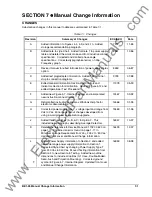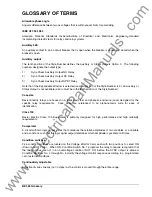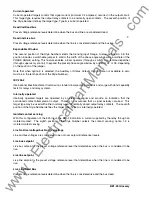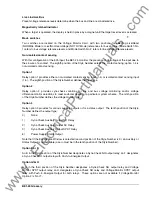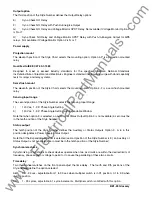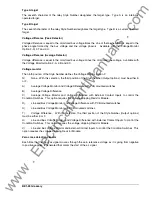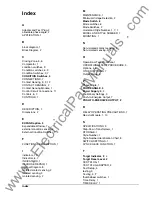
BE1-25 Glossary
Current operated
Current operated targets confirm that signal current (minimum 0.2 amperes) occurred in the output circuit.
This target type requires the output relay contacts to be normally open contacts. The seventh position of
the Style Number defines the target type; Type B is current operated.
Dead line/Dead bus
Preset voltage reference levels determine when the bus and line are considered dead.
Dead line/Live bus
Preset voltage reference levels determine when the line is considered dead and the bus live.
Expandable Window
The second position of the Style Number selects the Sensing Input Range. A relay with option 9 in this
position includes a switchable jumper to control the width of the phase angle window as a multiple of the
PHASE ANGLE setting. This feature enables a local operator (through a switch) or a remote dispatcher
(through supervisory control) to expand the preset phase angle window by a ratio of X2 or X3, depending
on the position of the jumper.
Note that when option 9 is selected, the Auxiliary or Status Outputs Option 3 are not available (a zero
must be in the tenth position of the Style Number).
IEC 255-5
International Electrotechnical Commission standard incorporating dielectric and surge withstand capability
tests for relays and relay systems.
Internally operated
Internally operated targets are operated by an electronic signal and provide an indication that the
associated contact attempted an output. There is no assurance that a signal actually occurred. This
target type may be used with either normally open or normally closed output relay contacts. The seventh
position of the Style Number defines the target type; Type A is internally operated.
Isolated contact sensing
With this configuration of the 52b input, the BE1-25 monitors a current supplied by the relay through an
isolated contact. The eighth position of the Style Number selects the contact sensing; option 1-5 is
isolated contact sensing.
Line Not-Overvoltage/bus Not-Overvoltage
Line and bus voltages are considered to be not over setpoint (reference) levels.
Live bus setpoint
Live bus setpoint is the preset voltage reference level that determines when the bus is considered to be
live.
Live line setpoint
Live line setpoint is the preset voltage reference level that determines when the line is considered to be
live.
Live Line/Dead Bus
Preset voltage reference levels determine when the line is considered live and the bus dead.
www
. ElectricalPartManuals
. com











